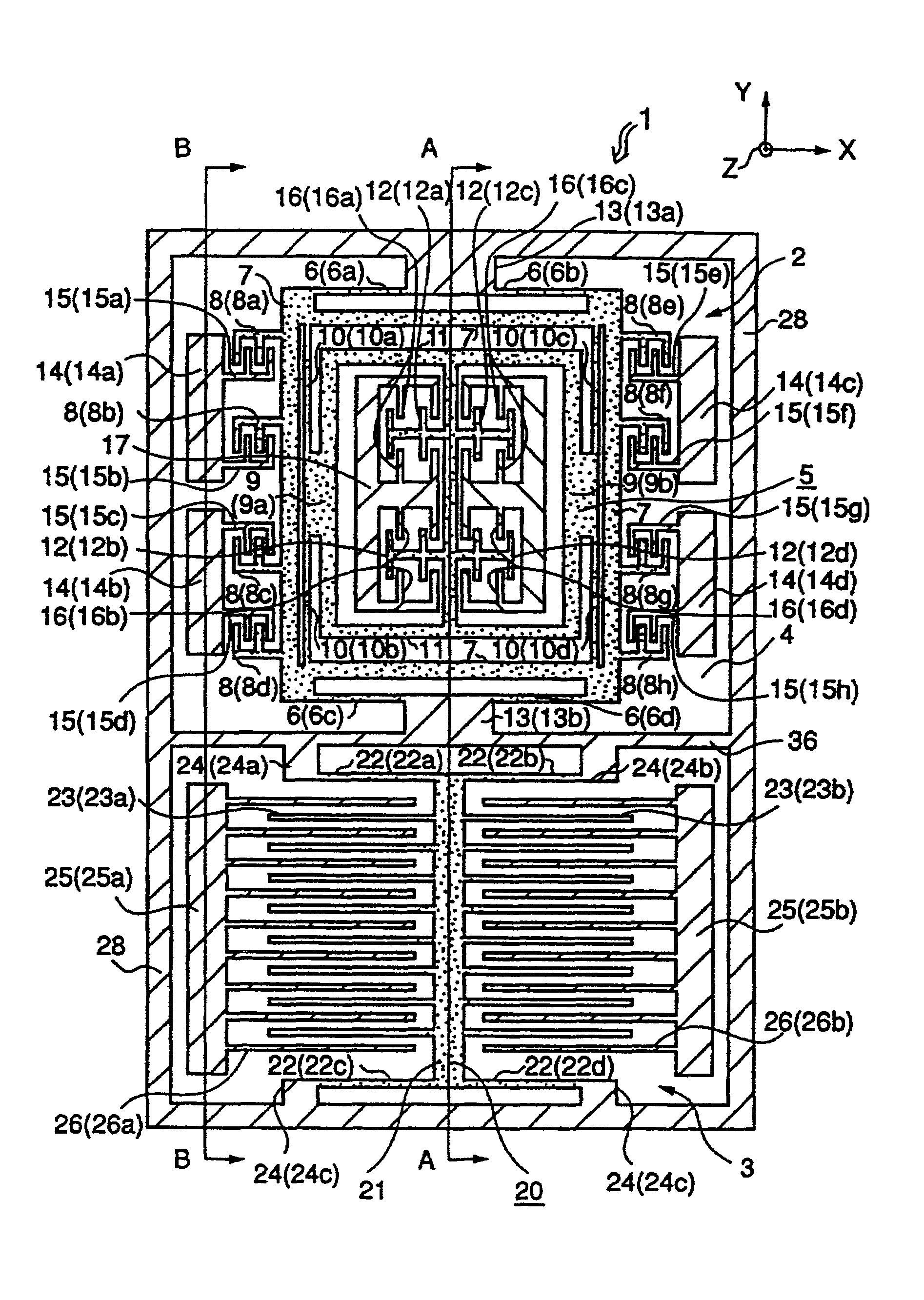Composite sensor device and method of producing the same
a sensor device and composite technology, applied in the direction of turn-sensitive devices, acceleration measurement using interia forces, instruments, etc., can solve the problems of vibrator formation, deterioration of detection sensitivity of angular velocity sensors, undesirable sensitivities for acceleration detection,
- Summary
- Abstract
- Description
- Claims
- Application Information
AI Technical Summary
Benefits of technology
Problems solved by technology
Method used
Image
Examples
Embodiment Construction
[0024]Hereinafter, embodiments of the present invention will be described with reference to the drawings.
[0025]FIG. 1 is a schematic plan view of a composite sensor device according to an embodiment of the present invention. FIG. 2A is a schematic cross section of the part of the composite sensor device taken along line A—A in FIG. 1. FIG. 2B is a schematic cross section of the part of the composite sensor device taken along line B—B in FIG. 1.
[0026]A composite sensor device 1 shown in FIG. 1 and FIGS. 2A and 2B comprises an angular velocity sensor 2 and an acceleration sensor 3 formed integrally with each other. The composite sensor device 1 is formed by using a glass substrate 4 as a base, a glass substrate 30 as a lid, and a silicon substrate 45 as a displacement portion forming member.
[0027]The angular velocity sensor 2 in this embodiment contains a plane vibrator 5 as the vibrator of the angular velocity sensor. The plane vibrator 5 is formed by processing the silicon substrate...
PUM
 Login to View More
Login to View More Abstract
Description
Claims
Application Information
 Login to View More
Login to View More - R&D
- Intellectual Property
- Life Sciences
- Materials
- Tech Scout
- Unparalleled Data Quality
- Higher Quality Content
- 60% Fewer Hallucinations
Browse by: Latest US Patents, China's latest patents, Technical Efficacy Thesaurus, Application Domain, Technology Topic, Popular Technical Reports.
© 2025 PatSnap. All rights reserved.Legal|Privacy policy|Modern Slavery Act Transparency Statement|Sitemap|About US| Contact US: help@patsnap.com



